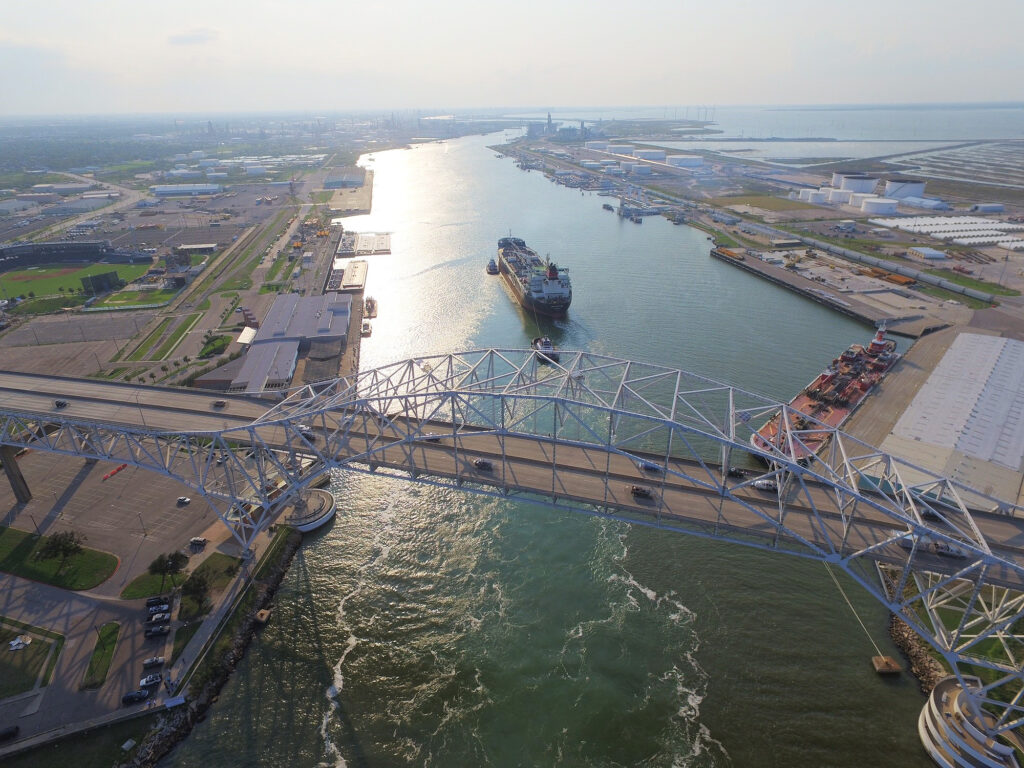It’s waited 30 years, but it won’t wait any longer. The Port of Corpus Christi announced it will immediately begin a dredging project in the Corpus Christi Ship Channel with the ultimate goal of being finished within four years — just in time for the new Harbor Bridge to open. No more waiting for funding from Congress, commissioners said.
Both the dredging and the taller bridge are necessary to keep the port viable as ships get bigger. The fourth-largest U.S. port in terms of tonnage, the Port of Corpus Christi has become known as the nation’s energy port. At least six oil and gas pipelines are being constructed to connect shale oil fields in West Texas and Eagle Ford to the port. Several facilities to liquify natural gas for easier transport, refineries, and plastics plants are also in the works in the area.
The port plans to dredge 36 miles of ship channel to facilitate the bigger ships now transporting goods around the globe. The Panama Canal opened a larger, deeper canal last year to make way for these ships, which can cut shipping costs by millions.
The channel will be dredged to 56 feet from its current 45 feet and widened to 54 feet, all along its 36-mile length. When the new Harbor Bridge is completed — and the old one torn down — it will have a vertical clearance of 205 feet. The old bridge has a vertical clearance of 138 feet.
Design work is already underway. Bids will be put out this month and, if all goes well, awarded in July. If construction begins in a timely manner, the first phase could be completed by July 2019.
When all three phases are finished, the Port of Corpus Christi will be the first in Texas to have a channel deeper than 50 feet beneath the water’s surface.
To meet the 2021 self-imposed deadline, the port has to get the equipment in the water and obtain necessary permissions from the U.S. Army Corps of Engineers, said Sean Strawbridge, executive director and CEO of the port. He said he is working with the corps to get those permissions fast-tracked.
In March, the port’s commissioners voted to issue up to $400 million in bonds to pay for the dredging, while still holding out hopes the federal government will come up with at least part of the money sometime in the future.
Corpus Christi ship channel dredging to begin immediately

The Port of Corpus Christi is the leading U.S. crude oil export port and the fourth-largest port in the United States in terms of tonnage.